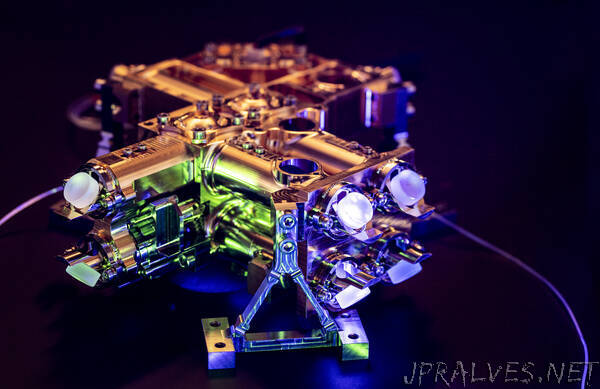
“Highly secure communication and the latest microscopy for medicine: leading-edge technologies from the world of quanta will be presented by the Fraunhofer Institute for Applied Optics and Precision Engineering IOF at the International Electronics Show CES 2021 ALL-DIGITAL from January 12 to 13.
The world of light particles, the so-called “quanta of light”, is very small at first glance and yet it holds gigantic potential for life in the future. Quantum physics not only holds the key to highly secure communication. Quantum-based methods for microscopy will also open doors, which have been closed up to now, in medicine and biology.
Fraunhofer IOF is conducting intensive research in the underlying research fields: quantum communication as well as quantum imaging. At CES 2021, the institute will provide insights into its latest developed technologies and highly application-oriented research projects.
Quantum communication: new encryption methods for the networked world
Thinking about tomorrow today - this principle also applies to communications in the age of digital transformation. Sensitive data, such as citizens’ health data, but also security-relevant data from companies, can already be stored today by hackers and read in the future with the help of more powerful computers. The aim of research into quantum communication is therefore to protect data today against the cyber attacks of tomorrow. A new encryption technology known as “quantum key distribution” (QKD for short) is intended to prevent this.
This quantum-based encryption is being researched at Fraunhofer IOF as part of various research programs and initiatives. At CES 2021, visitors can virtually marvel at a core element of the novel quantum communication: The EPS (short for “Entangled Photon Source”), developed at the Fraunhofer Institute in Jena, Germany, generates entangled photon pairs that can serve as the basis for generating quantum-based keys. The source has been further enhanced over the past three years and is now one of the most powerful hardware solutions in quantum communication.
Laboratory setup for the generation of entangled photon pairs.
© Fraunhofer IOF
In quantum imaging, a laser beam is passed through a non-linear crystal. In this way, a correlated photon pair is generated with a certain probability.
Quantum imaging for microscopy: Making the (previously) invisible visible
Even in biology, there are still many unanswered questions today. One reason for this is that living samples (e.g., DNA samples) are sensitive to certain types of light radiation (e.g., infrared). Intensive irradiation with this wavelength range can cause irreversible damage to the sample and render it unusable for the examination. At the same time, these particular wavelengths are needed to study the internal structure of the sample and thus obtain essential information about its inner structure.
New microscopy technologies resolve this conflict. Using entangled photon pairs, two different wavelengths can be used for sample analysis: One of them is optimized to provide particularly good insights into the sample while exposing the sample at an intensity that is harmless to its vitality. The second photon, on the other hand, is used for evaluation at the detector. Its wavelength is selected in such a way that it can be read out automatically. Due to the entanglement of the photons, they exchange their information with each other. Thus, the photon used for the evaluation at the detector does not have to interact with the sample itself. In this way, relevant information can be extracted from a living sample without exposing it to light radiation of harmful intensity. Damage to the sample is thus prevented or, depending on the application, significantly delayed.
Fraunhofer IOF is working on translating this fundamental principle into practical applications. At CES 2021, the quantum imaging method and corresponding application potentials in biology and medicine will be presented.”
